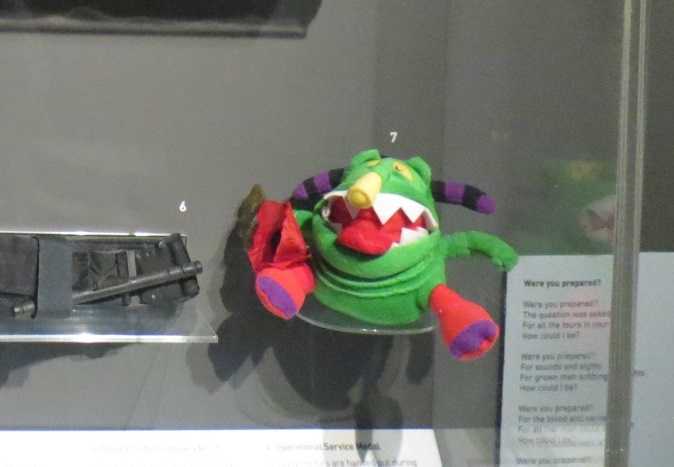
July 4, 2019, by lqxlahi
Jenni Hunt – Sharing Stories: Participation in Museums
How can museums talk about disability?
More and more, museums want to talk about histories that have been concealed – revealing the lives of women, of LGBT+ people, working class people, immigrants, and disabled people. However, working out the right way to talk about these issues can be challenging.
Disabled people have frequently been dehumanised, had their wishes ignored in research, and been silenced by the historic record. Often when we look to the past, the only records we have of them were created by the non-disabled people who acted as custodians, as caretakers, and as jailors. As a result, these are the stories commonly repeated within galleries, going against the disability rights movement’s rallying cry of “nothing about us without us”.
Whose voices can we hear?
One way museums are approaching telling these hidden and complex stories is to consider whose voices can be heard. There has been a shift in who has the power to tell stories, moving from the curator to those with lived experience – in this case, disabled people. Involving those with lived experience in the creation of exhibits has allowed museums to share a broader, more complex and far more valuable truth. This has led therefore to increased interest in working with disabled people.
This has also tied in to a wider change in who holds power within the collection. Previously, the curator was viewed as an all-knowing expert, possessing knowledge which they were able to distribute to an ignorant and eager to learn passive audience. This does not reflect how museums have evolved. Whilst curation in this traditional model still occurs, there has been a growth in community curation, where people beyond the museum are involved in the development of the exhibition. This needs to be undertaken with respect, as it is asking for the time and energy of people and can involve them sharing personal stories. The curation project should not just be done for the museum’s benefit, but also have value for participants, such as by providing new skills.
What has been done so far?
Examining how three sites have involved disabled people in the telling of stories about disability can help develop an understanding of the different ways these individuals can be empowered by being handed back control over their own stories.
The Museum of Liverpool’s “Blind School, Pioneering People and Places” exhibition (2018) involved current students at the local blind school in the creation of an interactive game, as well as interviewing and responding to two past students of the Royal School for the Blind. Emphasis was also placed on the fact many of the school’s founders were blind or partially sighted, and disabled voices were included, such as quotes from ex-students displayed on the walls. Moreover, by involving disabled people in the selection of objects and therefore including those they identified as important, a greater understanding of their lived experienced was reached.
The Science Museum’s “Wounded” exhibition (2016-2018) primarily focused on World War One, but also contained a section coproduced by veterans living with PTSD and working with Combat Stress. They co-curated a case, writing their own labels in order to explain the significance of the objects they saw. Darren, one of the participants, included this toy, which helped him to laugh and “became a personification of my PTSD… he signifies change and recovery for me”. Darren’s words imbue an everyday object with meaning.
The participants also made a short film which reflected on their experiences. At the beginning it was created in total anonymity, yet as the project went on participants wanted their contribution acknowledged, with their names used and their faces seen in the video. This shows how much they felt that they had benefited from their participation.
Another project, The National Disability Arts Collection and Archive exists to preserve the story of the Disability Arts Movement, recording the voices and artwork of key figures. The majority of the staff are disabled, and all of the artworks collected are by disabled artists. In this case disability participation is not a film or a display case, but rather fundamental to the entire project and the story that it tells.
Although these three projects featured a range of formats, and varying levels of involvement, they have all empowered disabled people and valued what they were able to bring to the exhibition. None of these projects were simple, requiring time and energy from both participants and museum staff. However, the end results were positive examples of how disabled people’s voices can be heard in places that previously shut them out.
Why is it important?
Participation projects are worthwhile doing as they prioritise the voices of experts with lived experience who have been overlooked. They enable a more complex understanding of a situation, bringing valuable depth of knowledge. They also represent a shift of power, and added uncertainty. The single voice of the curator or academic expert is no longer the only one that matters, and new and interesting ways of talking about previously avoided topics can be discovered. Their inevitable uncertainty reflects the real world in a way that simplistic views will not, and therefore it is to be valued, even and especially when it is challenging.
Jenni Hunt (PhD Candidate, University of Leicester)
Twitter: @Our_Objects
Email: Jh713@leicester.ac.uk
No comments yet, fill out a comment to be the first

Leave a Reply